Tom Harris Teaches Heartland Institute Fake Science to Students
by Scott Mandia, "Global Warming: Man or Myth?" blog, July 28, 2012
A science watchdog has released a report slamming a course taught at Carleton University (Canada) over what they call “biased and inaccurate” claims concerning climate change.
The course “Climate Change: An Earth Sciences Perspective,” taught by Tom Harris for two years, is the subject of a 98-page report written by the Committee for the Advancement of Scientific Skepticism (CASS). The report constitutes a blow-by-blow response citing extensively from the scientific literature to rebut 142 erroneous and fully-quoted claims.
On auditing the course, CASS discovered that key messages for students contradict accepted scientific opinion. These messages include: denying that current climate change has an anthropogenic cause; dismissing the problems that carbon dioxide emissions cause because CO2 is plant food; denying the existence of the scientific consensus on the causes of climate change; and claiming that we should prepare instead for global cooling.
In this blog post I will just focus on one ridiculous notion that Harris and his good friends at Heartland Institute keep pushing: CO2 is plant food.
The fake science pushed by Heartland Institute has been a top story for the past two weeks and it should be. Heartland Institute has been engaged in science misinformation for years and has even stooped to trying to teach fake science to our school kids. Tom Harris, a Heartland Expert, is using the same playbook up in Canada. (Unfortunately, Heartland is just one snake on the head of Medusa.)
For most plants growing in a controlled laboratory environment , increasing CO2 will increase photosynthesis and growth rates. Of course, most of us do not get our food from within a science lab. Instead we get our food from crops grown in the great outdoors and these plants are at the mercy of climate change.
Plants also need WATER and PROPER GROWING TEMPERATURES.
In 2010, human activities dumped 82 million metric tons of heat-trapping carbon dioxide daily into the atmosphere, a record. For perspective, our emissions from fossil fuels are equivalent to 15,000 Gulf oil spills every single day. The heat trapped by this gas is warming the planet (oceans, surface, ice, and air) and is increasing the probability of extreme heat waves (such as the European heat wave of 2003 and the 2010 Russian heat wave and fires) and droughts like the one Texas has been experiencing for a long time.
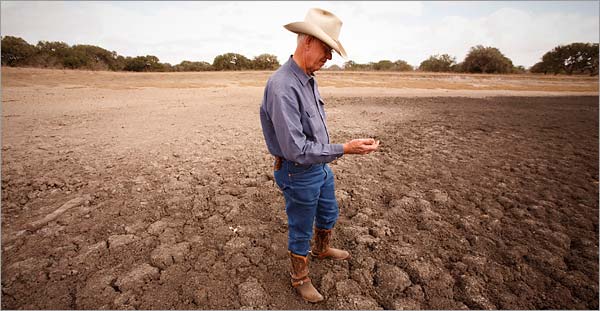
Texas farmer who lost his livelihood
These heat waves are destroying crops, driving up food prices, bankrupting farmers, and killing people.
Hey, Harris and Heartland: I dare you to tell this man that CO2 is plant food!
How fast can you run?
For the most recent drought outlook please visit the U.S. Drought Monitor.
In his April 27, 2011, US Senate hearing testimony, Dr. Jonathan Overpeck (2011) stated:
- There is broad agreement in the climate science research community that the Southwest, including New Mexico, will very likely continue to warm. There is also a strong consensus that the same region will become drier and increasingly snow-free with time, particularly in the winter and spring. Climate science also suggests that the warmer atmosphere will lead to more frequent and more severe (drier) droughts in the future. All of the above changes have already started, in large part driven by human-caused climate change.
- However, even in the absence of significant human-caused climate change, the Southwest is prone to drought and megadrought much more severe than droughts witnessed in the last 100 years. The 2,000-year record of drought in the region makes it clear that droughts lasting decades are likely independent of human-caused climate change. For this reason, the “no-regrets” strategy is to plan and prepare for droughts no matter the cause – human or natural – and to do so under the assumption that droughts will very likely be hotter and thus more severe in the future than in the past 2,000 years.
- Scientists and water managers alike, however, should be careful not to assume the currently estimated “worst case” drought scenario will remain so for long. As climate science has advanced in the Southwest, there have been a steady progression of new results that imply that today’s “worst-case” drought scenario is tomorrow’s second-worst case scenario. Water managers should pay particular attention to the emerging science that has been highlighted in the testimony above.
According to Stanford University scientists Diffenbaugh and Ashfaq (2010):
“In the next 30 years, we could see an increase in heat waves like the one now occurring in the eastern United States or the kind that swept across Europe in 2003 that caused tens of thousands of fatalities. Those kinds of severe heat events also put enormous stress on major crops like corn, soybean, cotton and wine grapes, causing a significant reduction in yields.”
According to the climate models, an intense heat wave -– equal to the longest on record from 1951 to 1999 -– is likely to occur as many as five times between 2020 and 2029 over areas of the western and central United States. The 2030s are projected to be even hotter. “Occurrence of the longest historical heat wave further intensifies in the 2030-2039 period, including greater than five occurrences per decade over much of the western U.S. and greater than three exceedences per decade over much of the eastern U.S.,” the authors wrote.

Globally, drought is projected to increase if we keep dumping heat-trapping carbon dioxide into the atmosphere. The image below (Dai, 2011) shows projected drought conditions by mid-century. A value of just -4 can lead to dust bowl conditions.
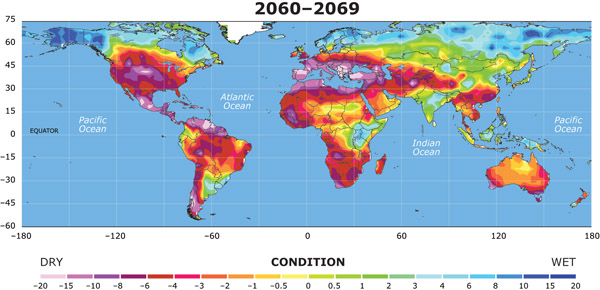 Projected drought by mid-century.
Projected drought by mid-century.
Just how many plants do Tom Harris and Heartland Institute think can be grown in a dust bowl? Telling students that CO2 is plant food is like telling a person on fire to take vitaminsbecause they are good for him.
So are there any “winners” in the plant kingdom? Yes, but not the ones we wish to see.
According to the WebMD article, Climate Change Brings Super Poison Ivy:
As the level of carbon dioxide in the atmosphere increases, it’s boosting the growth of poison ivy plants, two recent studies show. These elevated carbon dioxide levels are creating bigger, stronger poison ivy plants that produce more urushiol, the oil that causes the allergic reaction and miserable poison ivy rash. The urushiol isn’t just more plentiful; it might also be more potent.
Another pest that is gaining ground due to climate change is the kudzu vine which many southerners call “the vine that ate the South”. Kudzu quickly covers trees and other vegetation thus robbing them of the sunlight required for photosynthesis. The result is a slow death.
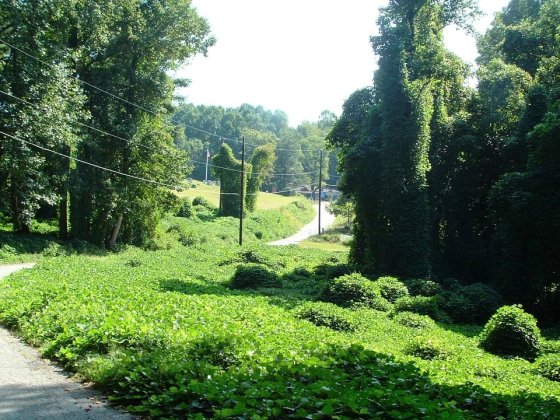
Kudzu - "The Vine That Ate the South"
As climate warms, Kudzu is moving northward and is expected to blanket the entire eastern U.S. Imagine your children and grandchildren not being able to see to beauty of fall foliage because the vines have either covered or killed the trees.
One of the winners is also deadly to many: pollen. As I detailed in Global Warming IS Something to Sneeze At!,debilitating and costly allergies and deadly asthma are on the increase due to increased CO2 levels and the associated climate change.
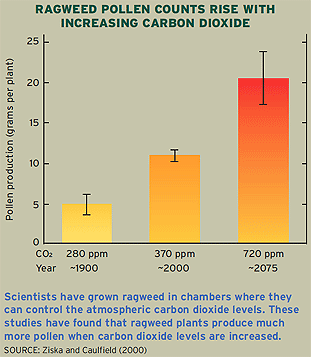
Ragweed loves higher CO2

Allergies are very costly
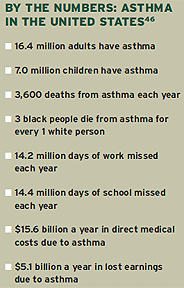
Asthma is deadly
Increased CO2 is more than just something to sneeze at – it can be deadly for asthmatics!
I wonder how many of Tom Harris’ students have asthma? Do these students realize that the information from Tom Harris and Heartland Institute is endangering their health and potentially their lives?

Tom Harris - Heartland Institute "Expert"
Why would Tom Harris teach his students that CO2 is plant food? Is it because he is ignorant of the facts or is he purposefully misleading his students just like Heartland Institute misleads? Read this statement by Tom Harris and decide:
I completely agree with fourhorses that the ultimate aim is to create a situation where the CPC can say assertively, “The science no longer supports the assumptions of the Kyoto Accord.”However, politically this cannot be done overnight without the Conservatives taking what they consider to be an unacceptable hit (do people think they would really lose votes with this statement (from Canadians who would otherwise vote for them, that is?).So, the solution put on this site a little while ago by Tina is one I would support as well – namely, they don’t take sides at all and admit they don’t know and so are holding unbiased, public hearings in which scientists from both sides are invited to testify. The resulting chaos, with claims all over the map, will do enough to thoroughly confuse everyone (which is appropriate, actually, since the science is so immature and, frankly, confusing) and take the wind out of the sails of the “we are causing a climate disaster and must stop it” camp entirely, and the CPC can quietly turn to important issues without really having had to say much at all.What’s wrong with this approach?Sincerely,Tom Harris, Executive Director, Natural Resources Stewardship Project
Web: www.nrsp.com
Oops, almost forgot to remind you:
Others reporting on this education tragedy:
- Richard Littlemore, Fake Heartland “Scientist” Infiltrates Canadian University, DeSmog Blog
- Suzanne Goldenberg, Heartland associate taught ‘biased’ climate course at Ottawa university, The Guardian
- Greg Laden, Climate Science Denial at Carleton University: A Detailed Take-Down, Greg Laden’s Blog
- Kate, Denial in the Classroom, ClimateSight
- Eli, It comes in threes, Rabett Run
- BigCityLib, Denialists In The Canadian Classroom, BigCityLib Strikes Back
- Dan Moutal, Climate denial at a Canadian university, Planet 3.0
- Sarah Laskow, Heartland ‘expert’ taught climate denialism at a Canadian university, Grist.org
- Graham Readfearn, Climate misinformation coming to a school near you?, Graham Readfearn
- Mike De Souza, Climate scientist ‘troubled’ by skeptic’s teachings at Carleton University, Postmedia News
- doc, Climate Change Denial Course Puts the K in Quality at Carleton University, Plausibility.net
- Katherine Bagley, Science Educators Troubled by Heartland’s Climate Curriculum and Author’s Credentials, Inside Climate News
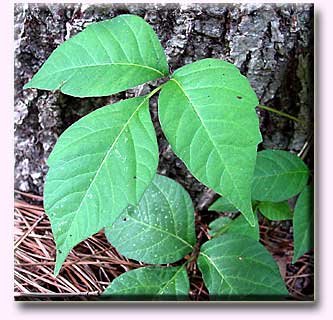







No comments:
Post a Comment